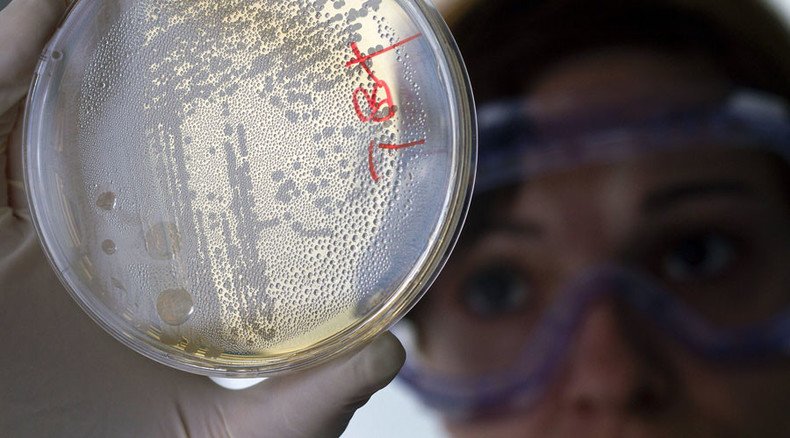The World Health Organization (WHO) has issued a warning that gonorrhoea, a sexually transmitted disease, is showing growing resistance to a...

The World Health Organization (WHO) has issued a warning that gonorrhoea, a sexually transmitted disease, is showing growing resistance to antibiotics, as indicated by recent findings from its Enhanced Gonococcal Antimicrobial Surveillance Programme (EGASP), which tracks the spread of antibiotic-resistant gonorrhoea.
The reportemphasizes the importance of enhancing monitoring, boosting diagnostic capabilities, and guaranteeing fair access to new therapies for sexually transmitted infections (STIs). The publication of the updated data occurs alongsideGlobal Campaign for Awareness of Antimicrobial Resistance, emphasizing the need for worldwide efforts to combat drug-resistant infections.EGASP,Initiated by the WHO in 2015, it gathers laboratory and clinical information from selected locations globally to monitor antimicrobial resistance and guide therapeutic recommendations.
This worldwide initiative is crucial for monitoring, preventing, and managing drug-resistant gonorrhoea, as well as safeguarding global public health," stated Dr. Tereza Kasaeva, Director of the WHO Department for HIV, TB, Hepatitis & STIs. "WHO urges all nations to tackle the increasing rates of sexually transmitted infections (STIs) and incorporate gonorrhoea monitoring into their national STI programs.
From 2022 to 2024, the level of resistance to ceftriaxone and cefixime, the main drugs used for treating gonorrhoea, increased significantly, rising from 0.8% to 5% and from 1.7% to 11% respectively, with resistant forms identified in additional nations. Resistance to azithromycin stayed constant at 4%, whereas resistance to ciprofloxacin climbed to 95%. Cambodia and Viet Nam recorded the highest levels of resistance.
In 2024, 12 EGASP nations across five WHO regions shared information, a rise from only four countries in 2022. This marks a favorable trend indicating increased dedication to monitor and manage drug-resistant infections within countries and areas. The participating nations—Brazil, Cambodia, India, Indonesia, Malawi, the Philippines, Qatar, South Africa, Sweden, Thailand, Uganda, and Vietnam—reported 3,615 cases of gonorrhea.
More than half of all symptomatic gonorrhoea cases in men (52%) originated from nations within the WHO Western Pacific Region, such as the Philippines (28%), Viet Nam (12%), Cambodia (9%), and Indonesia (3%). The WHO African Region contributed 28% of the cases, followed by the South-East Asia Region (13%, Thailand), the Eastern Mediterranean Region (4%, Qatar), and the Region of the Americas (2%, Brazil).
The average age of patients was 27 years (spanning from 12 to 94). In the cases, 20% were men who have sex with men, and 42% indicated they had multiple sexual partners in the last 30 days. Eight percent mentioned using antibiotics recently, while 19% had traveled recently.
Enhancing and broadening international monitoring
In 2024, the WHO enhanced genomic monitoring, analyzing almost 3,000 samples from eight nations. Pioneering research on innovative therapies includingzoliflodacinand gepotidacin, along with research on tetracycline resistance, was carried out by WHO's Collaborating Centre for AMR in STIs based in Sweden, in collaboration with WHO. These efforts are supporting the development of future gonorrhoea control measures and doxycycline-based prevention (DoxyPEP) approaches.
EGASP further extended its scope in 2024, as Brazil, Côte d'Ivoire, and Qatar became part of the initiative, while India started implementing and reporting data from 2025 within its National AIDS and Sexually Transmitted Diseases Control Programme.
Although there have been significant advancements, EGASP encounters obstacles such as insufficient funding, incomplete reporting, and data deficiencies from women and non-genital areas. The WHO urges immediate investment, especially in national monitoring systems, to maintain and broaden global gonococcal AMR surveillance.
Copyright 2025 World Health Organization. All rights reserved. Published by AllAfrica Global Media (Articlepedia Today).
Tagged: Health and Medicine, International Organizations and Africa, Africa, External Relations
Provided by SyndiGate Media Inc.Syndigate.info).


